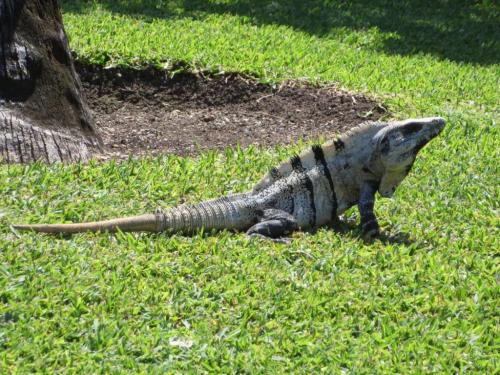An ancient lizard, which lived more than 250 million years ago, could detach its tail if it was bitten by a predator.
The study, published in Scientific Reports, shows that this ancient group of reptiles could lose their tails and flee predators some 289 million years ago, providing the oldest evidence of this bizarre behavior to date.
The creatures lived during the Early Permian era, and weighed no more than 2 kilograms (4.4 pounds). Their small size made them vulnerable to hungry predators, like large carnivorous amphibians and mammals, so a clever way to escape would have come in handy.
While losing your tail might seem rather dramatic, it is also very effective. The wriggling tail distracts the predator giving the lizard enough time to flee. Although it ends up without a tail, it is still alive and has protected all of its vital organs. In some species, the tail grows back over time – normally a matter of weeks – so the process, called caudal autotomy, can happen again.
Nevertheless, the tail is still important for movement and fat storage and is only dropped as a last resort. Today some species can only lose their tail if it is grabbed or pulled by their attacker, while others, such as geckos, can drop it as a result of severe stress. Some species will return to their missing tail and eat it to regain some of the energy reserves they have lost.
The team from the University of Toronto Mississauga studied over 70 ancient reptile tail vertebrae. They found partial splits in these tail bones, something that they couldn’t find in skeletons from other reptiles that lived at the time. When analyzing the bone fragments, the researchers found that these cracks, which likely provided points at which the tail could break off, developed naturally, and were more noticeable in juvenile reptiles, which were hunted more heavily. In many adults, the splits had fuzed up.
Interestingly, Captorhinus was once the most common type of reptile, managing to spread across Pangea – the ancient landmass that existed before the continents split – by the end of the Permian (251 million years ago). As the only reptiles with the ability to drop their tails that lived back then, it seems that this strange survival technique might have been the secret to their success.
The lizard group eventually died out, along with its unique tail-dropping ability. Then, some 70 million years ago, it re-evolved and re-appeared. Today it occurs in various reptiles from skinks to tuataras.
And if this behavior seems too bizarre to imagine, check out Salazar the crested gecko who sadly lost his tail in a face-off with a cat.















